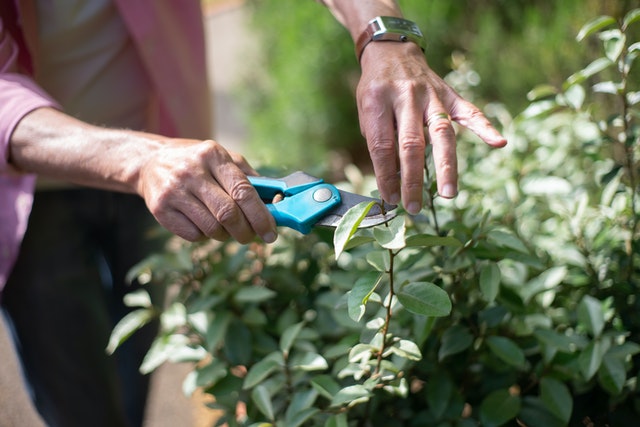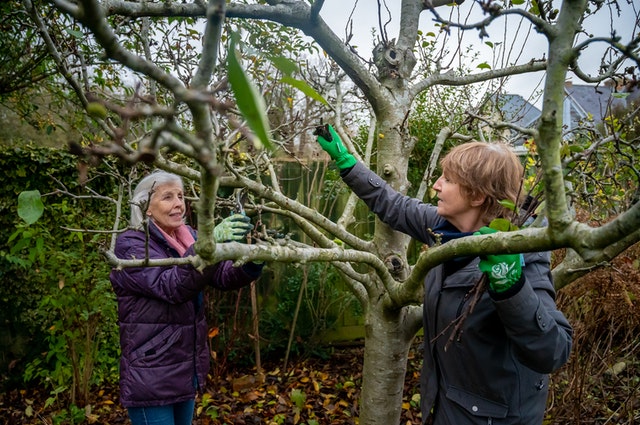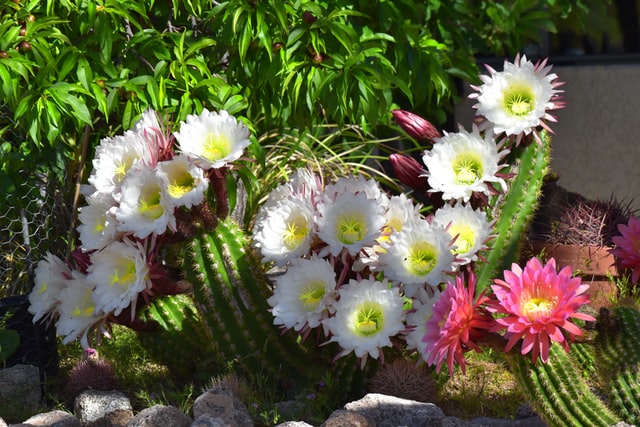Flowering Plants To Prune When Dormant
Prune shrubs and trees that flower on the current season’s growth (new wood) in late winter or early spring before they start growing and before bloom. Depending upon how large you want the shrub to grow, you can cut them back as far as the first pair of buds above the soil. For taller shrubs, prune plants higher above the ground.
Glossy abelia Abelia x grandiflora
Groundsel bush Baccharis halimifolia
Barberry (deciduous) Berberis species
Butterfly bush Buddleja davidii
Beautyberry Callicarpa species
Sasanqua camellia Camellia sasanqua
Blue mist Caryopteris x clandonensis
Summersweet Clethra alnifolia
Smokebush Cotinus coggygria
Rose of Sharon Hibiscus syriacus
Smooth hydrangea Hydrangea arborescens
Panicle hydrangea Hydrangea paniculata
Golden raintree Koelreuteria paniculata
Crape myrtle Lagerstoemia indica
Bush clover Lespedeza thunbergii
Heavenly bamboo Nandina domestica
Sourwood Oxydendrum arboreum
Hybrid tea Rosa cultivars
Elderberry Sambuscus species
Japanese spirea Spiraea japonica
Snowberry Symphoricarpos species
Blackhaw Viburnum prunifolium
American cranberry bush Viburnum trilobum
Chaste tree Vitex agnus-castus
‘When grown for foliage
Pruning Broad-Leaf Evergreens
In general, broad-leaf evergreens need little pruning. When necessary, prune them just before spring growth begins or immediately after flowering. If you choose the former, you’ll give up some blooms this year, but you’ll take advantage of their spring growth spurt for rejuvenation. Cut off dead, sick, injured, crossing, or rubbing stems, as well as stray stems for better shaping. Some broadleaf evergreens may need more extreme pruning, particularly if you’ve put shrubs like jumbo rosebay rhododendrons (Rhododendron maximum) in foundation plantings without taking account of their mature size.
Deadheading Rhododendrons
Deadhead faded flowers of broad-leaf evergreens, such as rhododendrons, andromeda, and mountain laurel, just as you would the deciduous common lilac. Detaching faded flowers before seeds develop encourages these shrubs to direct their energy into next year’s buds. As a result, plants look neater and will flower more next year. To deadhead rhodos, grasp a branch in one hand and a flower truss or cluster in the other, then carefully snap it off at its base with a quick twist of the wrist.
Pruning Deciduous Trees
Some deciduous trees produce excessive sap in late winter and early spring, just before and when new growth begins. If you prune these trees, known as bleeders, during that time, sap runs from the fresh wounds. Because we love our trees, we project our feelings onto them and assume that “bleeding” hurts. It doesn’t. Nor does it injure the tree. Prune the following bleeders during dormancy. If flowing sap bothers you and you don’t like pruning in late winter or early spring, make cuts after the leaves have unfurled, around July. Do not prune when the tree just starts leafing out, however, or from late summer to mid-fall, when new weak growth can occur and the presence of pests and diseases is high.
Deciduous Trees To Prune When Dormant
Maple Acer species
Horse chestnut Aesculus hippocastanum
Birch Betula species
Hornbeam Carpinus species
Hickory/pecan Carya species
Yellowwood Cladrastis kentukea
Beech Fagus species
Walnut Juglans species
Osage orange Maclura pomifera
Mulberry Morus species
Poplar Populus (some species)
Oak Quercus species
Willow Salix species
Chinese scholar tree Sophora japonica
Linden Tilia species
Elm Ulmus species








